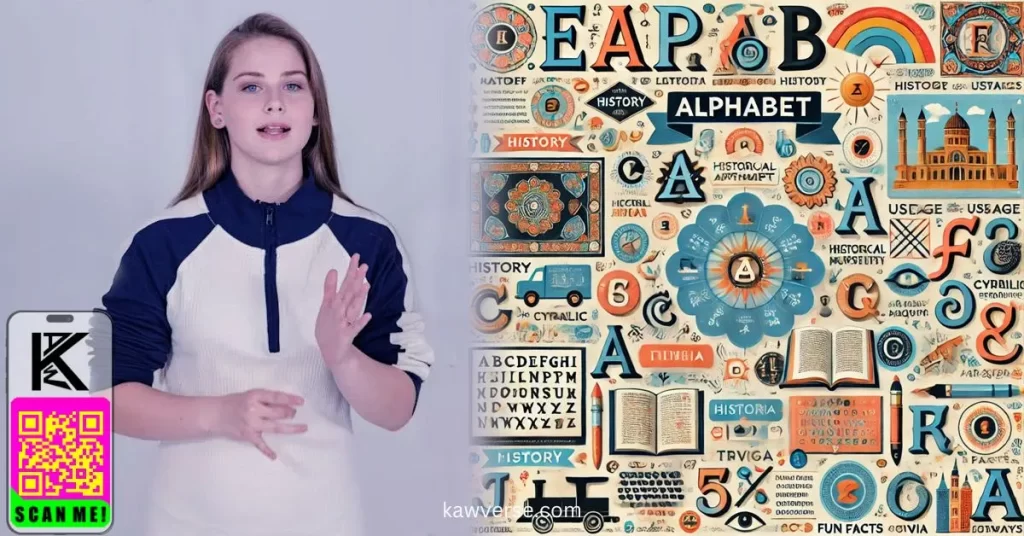Welcome to the ultimate guide on Alphabet A-Z, a journey through the foundational building blocks of communication, education, and cultural exchange. Whether you’re a beginner seeking clarity, an educator crafting lessons, or an expert exploring advanced applications, this article caters to diverse needs.
Benefits of Reading This Article
By engaging with this article, you will:
- Gain a clear understanding of Alphabet A-Z and its relevance.
- Discover real-world applications for personal and professional growth.
- Learn how the alphabet shapes communication and creativity.
- Explore its cultural, educational, and technological impact.
- Access FAQs, actionable insights, and future trends to stay informed.
Definition of Alphabet A-Z

The alphabet refers to a standardized set of letters used to represent the sounds of a language. The term “A-Z” denotes the full sequence of letters in many alphabets, notably the Latin alphabet, which is widely used across the globe. For example:
- English Alphabet: A sequence of 26 letters (A to Z).
- Greek Alphabet: A distinct set of 24 characters (e.g., Alpha to Omega).
- Sign Language Alphabets: Visual representations of letters through hand gestures.
Each alphabet serves as a foundation for literacy, enabling individuals to read, write, and communicate effectively.
Examples and Comparisons
- English: “Cat” combines C, A, and T to form a word.
- Spanish: Additional letters like Ñ expand the alphabet’s scope.
- Digital Alphabets: Binary (0s and 1s) powers computer languages.
Target Audience
This guide is for:
- Students: Building foundational literacy skills.
- Educators: Developing engaging teaching materials.
- Linguists: Analyzing language structures and evolution.
- Professionals: Leveraging the alphabet in design, coding, and branding.
- Enthusiasts: Exploring cultural and historical contexts of alphabets.
Applications and Real-World Use Cases
The alphabet’s influence spans:
1. Education
- Teaching Literacy: Essential in early education to develop reading and writing skills.
- Language Learning: A gateway to mastering new languages and scripts.
2. Technology
- Programming Languages: Built on alphanumeric characters.
- Search Algorithms: Depend on letters for indexing and retrieval.
3. Communication
- Social Media: Text-based interactions rely on alphabetic systems.
- Braille and Sign Language: Enhance accessibility for disabled communities.
4. Creativity and Design
- Typography: Fonts and letterforms define visual aesthetics.
- Branding: Logos and slogans leverage alphabetic elements for identity.
Real-Life Example: The Universal Power of A-Z
Consider the digital revolution: URLs (e.g., www.example.com) and email addresses utilize the Latin alphabet to connect global audiences seamlessly.
Relevance and Importance
Why is the alphabet critical today?
- Global Communication: A universal medium across cultures and languages.
- Technological Integration: Central to coding, algorithms, and AI.
- Cultural Preservation: Safeguards linguistic heritage and diversity.
Current Trends
- Digital Accessibility: Innovations like screen readers and voice-to-text.
- Language Revival: Efforts to restore endangered scripts and alphabets.
Types and Subtopics
1. Traditional Alphabets
- Latin, Greek, Cyrillic, etc.
2. Alternative Systems
- Phonetic Alphabets: NATO phonetic alphabet (e.g., Alpha, Bravo, Charlie).
- Morse Code: A system of dots and dashes representing letters.
3. Emerging Trends
- Unicode Standard: Ensures global compatibility across digital platforms.
- AI-Generated Fonts: Custom alphabets tailored to user preferences.
Key Takeaways
- The alphabet is more than a sequence of letters; it’s a cultural and technological cornerstone.
- Applications range from literacy and education to technology and creativity.
- Emerging trends like Unicode and digital accessibility highlight its evolving significance.
FAQs
1. Why is the alphabet important? The alphabet enables written communication, supports education, and powers technology.
2. How many alphabets exist globally? There are hundreds, including Latin, Greek, Cyrillic, Arabic, and more, each serving different languages.
3. What is the role of the alphabet in accessibility? Braille, sign language, and digital tools ensure inclusivity for disabled individuals.
Next Steps and Future Directions
- For Beginners: Practice forming words and sentences using A-Z.
- For Educators: Incorporate innovative teaching tools like apps and games.
- For Experts: Explore advanced topics like script evolution and digital typography.
- Future Trends: AI-driven language models and augmented reality tools for immersive learning.
Conclusion
The alphabet A-Z represents the essence of communication, creativity, and cultural identity. Its applications transcend boundaries, impacting education, technology, and accessibility. As we navigate an increasingly interconnected world, understanding and leveraging the power of the alphabet is more critical than ever. Embrace the journey of discovery, and let the alphabet inspire your next steps in learning, innovation, and expression.


Leave a Reply
You must be logged in to post a comment.